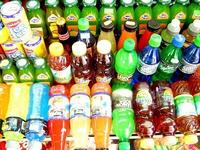-
Emergency medical response in a post-9/11 Washington, D.C.
Beverly Pritchett, the senior deputy director of the Health Emergency Preparedness and Response Administration at the D.C. Department of Health, is a 27-year veteran of the U.S. Army Medical Service Corps; Pritchett discusses improvements made to the city’s emergency medical response capabilities, the integration of smartphones and social media into disaster response plans, and the need for continued funding to sustain the gains made in public health over the past ten years
-
-
Simple solution for removing arsenic from water

Almost 100 million people in developing countries are exposed to dangerously high levels of arsenic in their drinking water, unable to afford complex purification technology; scientists developed a simple, inexpensive method for removing arsenic based on chopped up pieces of ordinary plastic beverage bottles coated with a nutrient found in many foods and dietary supplements
-
-
Lawmakers struggling to end critical medicine shortage
Critical shortages for medicines needed in treating life-threatening illnesses have lawmakers and public health officials scrambling to find solutions; this year alone, a record high of more than 180 drugs crucial for treating childhood leukemia, breast and colon cancer, infections, and other diseases have been declared in short supply
-
-
A natural food preservative kills food-borne bacteria
Salmonella and E. coli account for more than half of all food recalls in the United States; salmonella contributes to an estimated 28 percent of more than 3,000 U.S. deaths related to foodborne illness each year; researchers have discovered and received a patent for a naturally occurring lantibiotic — a peptide produced by a harmless bacteria — that could be added to food to kill harmful bacteria like salmonella, E. coli, and listeria
-
-
Gold nanoparticles help to diagnose flu in minutes
Arriving at a rapid and accurate diagnosis is critical during flu outbreaks, but until now, physicians and public health officials have had to choose between a highly accurate yet time-consuming test or a rapid but error-prone test; University of Georgia researchers offer a solution
-
-
Transforming acids into bases
Chemists at the University of California, Riverside have accomplished in the lab what until now was considered impossible: transform a family of compounds which are acids into bases; the research offers vast family of new catalysts for use in drug discovery, biotechnology
-
-
Wisconsin hospitals ahead of the curve
In the 2009 H1N1 flu epidemic while public health officials across the United States were contending with shortages of basic supplies like ventilator masks, Wisconsin health authorities were able smoothly to weather the storm thanks to its stockpiles of protective clothing, emergency planning, and advanced training
-
-
Antibacterial stainless steel created
Materials scientists have devised a way of making stainless steel surfaces resistant to bacteria; by introducing silver or copper into the steel surface — rather than coating it on to the surface — the researchers have developed a technique that not only kills bacteria but is very hard and resistant to wear and tear during cleaning
-
-
Satellites could predict next cholera outbreak
With cholera making an unlikely resurgence, catching countries like Haiti and Pakistan by surprise, public health officials are exploring the potential for new technology to help stem the spread of future outbreaks; each year the disease affects three to five million people and claims more than 100,000 lives; researchers believe that satellite images of oceans could help forecast when a cholera outbreak is likely to strike
-
-
Sprouts declared source of deadly E.coli outbreak, again
After declaring last week that sprouts were not the culprit of the deadly E. coli outbreak, German officials are now saying that sprouts were indeed the source after all; the announcement comes without conclusive evidence that sprouts were the source of the bacterial outbreak; instead health investigators are relying on circumstantial evidence; tests from the farm located in Lower Saxony have come up negative for the rare strain of E. coli that is sickening patients
-
-
Boulder Colorado hit with plague and rabies
On 3 June, the Boulder County Public Health (BCPH) department warned residents of the Mapleton Hill area that a domestic cat and a dead squirrel had tested positive for the plague; according to Joe Malinowski, the manager of BCPH’s Environmental Health Division, last week a second dead squirrel was found with the plague, but the cat had been successfully treated for the disease; so far there have been no other confirmed cases, but residents have reported several additional dead squirrels
-
-
Method used in hunting serial killers can be used against killer diseases
Geographic profiling, a method used in the hunt for serial killers, can help combat infectious diseases; the statistical technique uses the locations of crimes to identify areas in which the serial criminal is most likely to live and work; it was originally developed to help police prioritize suspects, but can now be used to map the locations of diseases to try and identify the source of the disease
-
-
New device could help stop one of the world's deadliest killers

A new portable and low cost water sanitation device could help save millions of lives each year; water borne diseases contracted from contaminated water are one of the world’s leading causes of death; each year nearly two million people die, primarily young children, from preventable diseases like diarrhea, cholera, and typhoid from drinking unsafe water; it is estimated that roughly 1.1 billion people lack access to clean water, but all that could potentially change thanks to Torben Frandsen’s LifeStraw; LifeStraw is a 10 inch long straw that is capable of generating 185 gallons of clean water, requires no electricity, and can be cheaply manufactured
-
-
CDC instructs on preparations for Zombie Apocalypse
There are many exotic diseases the Atlanta-based U.S. Centers for Disease Control and Prevention (CDC) is investigating, and about it which it warns Americans; few followers of the health agency were prepared for its latest post: “Preparedness 101: Zombie Apocalypse”; the post, written by Assistant Surgeon General Ali Khan, instructs readers how to prepare for “flesh-eating zombies” – zombies similar to those one sees in movies like “Night of the Living Dead” and video games like Resident Evil; CDC spokesperson said: “It’s kind of a tongue-in-cheek campaign—- We were talking about hurricane preparedness and someone bemoaned that we kept putting out the same messages”
-
-
HHS awards SIGA Technologies smallpox contract worth up to $2.8 billion
New York-based SIGA Technologies has signed a 5-year, $433 million contract with the U.S. Department of Health and Human Services (HHS) to deliver two million courses of the company’s smallpox antiviral, ST-246, to the Strategic National Stockpile; the contract includes options that would raise the contract’s total value to approximately $2.8 billion if these options are fully exercised
-
More headlines
The long view
We Ran the C.D.C.: Kennedy Is Endangering Every American’s Health
Nine former leaders of the Centers for Disease Control and Prevention (CDC), who served as directors or acting directors under Republican and Democratic administrations, serving under presidents from Jimmy Carter to Donald Trrump, argue that HHS Secretary Roert F. Kennedy Jr. poses a clear and present danger to the health of Americans. He has placed anti-vaxxers and conspiracy theorists at top HHS positions, and he appears to be guided by a hostility to science and a belief in bizarre, unscientific approaches to public health.
